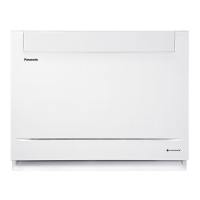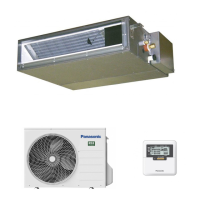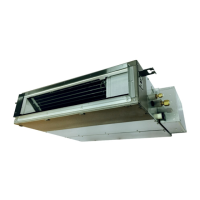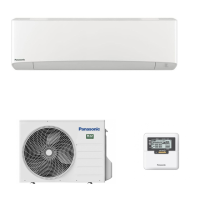45
12.1.4 Connecting the Drain Piping
Lay the drain piping so as to ensure drainage.
Use a locally purchased VP20 general rigid PVC pipe (outer diameter ø26) for the drain piping and firmly
connect the indoor unit and the drain piping using supplied hose band to ensure that no leakage occurs.
Drain piping located indoor should always be insulated by wrapping with locally purchased insulation (foamed
polyethylene with a thickness of 10 mm or more).
The drain piping should have a downward gradient (1/100 or more) and should be secured by using pipe hanging
equipment to avoid creating hills or traps partway.
Should there be any obstacle preventing the drain piping from being extended smoothly, the drain piping can be
raised outside of the main unit as shown in the illustration below.
Rise
Hill
Trap
300 mm or less
(not a downward gradient)
500 mm or less
Good
At least 1/100
Drain insulator 0
Drain hose 8
Hard PVC pipe (VP20)
Hose band 9
Unit drain port
Do not use adhesive.
Adhere with
PVC adhesive.
CAUTION
Strictly do not install and extend the drain piping from the main unit drain water outlet horizontally or upward or raised it 50 cm or more.
Doing so may result in poor drainage or drain motor failure.
Do not use drain hose bent at 90° angle. (The maximum permissible bend is 45°.)
12.1.5 Insulating the Refrigerant Piping
After the piping is connected, insulate. (Refer to the illustration)
Wrap fi rmly
with vinyl tape,
leaving no gaps.
Unit side
Wrap fi rmly
with vinyl tape,
leaving no gaps.
Flare insulator 6
Clamper 7
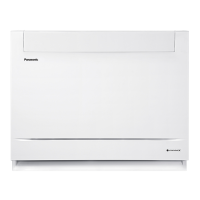
